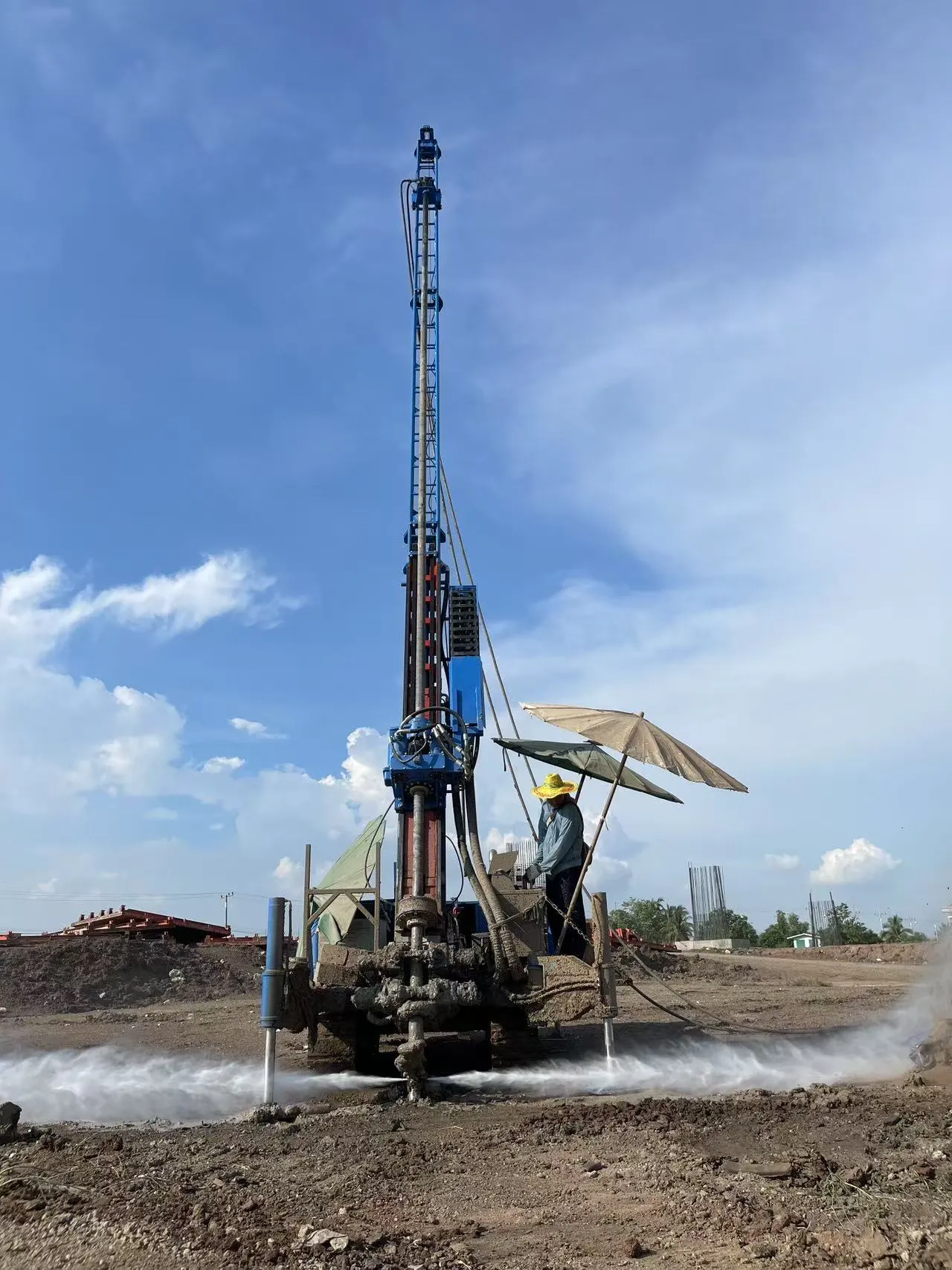【Excerpt】High pressure jet grouting construction technology
Browse services
- Petroleum and Gas
- 【Excerpt】High pressure jet grouting construction technology
- 【Excerpt】How to construct slope anchor cable?
- HDL-60S multi-function drilling rig shipped to Singapore
- 【Excerpt】Why do we need to test piles before pile foundation construction?
- We are the one-stop construction problem solver
- 【Holiday arrangement】Dragon Boat Festival
- 【Excerpt】The "Seven-Character Guideline" for Ground Treatment: A Comprehensive Interpretation!
- 【Excerpt】What is the difference between cement mixing pile and high pressure jet pile?
- 【Construction Case】HDL-200C top drive drilling rig for water stopper curtain of overseas dam
- 【Excerpt】What to do with a broken pile
- Holiday arrangement
- Our Drilling Rig: Client Success Story

The high-pressure jet grouting method involves using a drilling rig to drive a grout pipe with nozzles into predetermined soil layers. High-pressure equipment then generates a 20-40MPa jet stream of slurry or water-air mixture through the nozzle. This jet cuts, dislodges, and destabilizes soil while the drill pipe is gradually raised at a controlled speed to ensure thorough mixing of slurry and soil particles. After solidification, the formed cylindrical consolidation mass (known as a jet grouted pile) effectively reinforces foundations or prevents water seepage.
According to the different injection methods, jet grouting can be divided into single pipe method, double pipe method and triple pipe method.

The reinforcement radius of jet grouting is determined by multiple factors, including injection pressure P, lifting velocity S, shear strength τ of the reinforced soil, nozzle diameter d, and slurry consistency B. The reinforcement range is directly proportional to injection pressure P and nozzle diameter d, while inversely proportional to lifting velocity S, soil shear strength τ, and slurry consistency B. The strength of the reinforced structure depends on both the cement content per unit volume and the soil properties.
Formation mechanism
The pile formation mechanism of high pressure jet grouting includes the following five effects:
(1) The effect of high-pressure jet cutting on soil. The jet flow pressure impacts and destroys the soil in the form of pulses, resulting in the emergence of holes and expansion of soil cracks.
(2) Mixed mixing effect. During the rotation and lifting of the drill pipe, a gap is formed in the rear of the jet. Under the injection pressure, the soil particles are forced to move in the direction opposite to the moving direction of the nozzle (that is, the direction with less resistance), and the new structure is formed by mixing with the slurry.
(3) Elevation replacement effect (Triple pipe method). While the high-speed water jet cuts the soil, a part of the cut soil particles are discharged above ground due to the introduction of compressed gas. The void left after the discharge of soil particles is supplemented by cement slurry.
(4) Filling, infiltration and consolidation. The high-pressure cement slurry quickly fills the gully and the void of soil particles, and solidifies by water separation. It can also infiltrate a certain thickness of sand layer to form a consolidated body.
(5) Compaction effect. In the process of cutting and crushing soil layer, high-pressure jet has residual pressure at the edge of the broken part, which can produce a certain compaction effect on the soil layer, so that the compressive strength of the edge part of the rotary jet pile body is higher than that of the central part.
——Source: Zhulong Geotechnical
Disclaimer: We respect originality and share it, and appreciate the hard work and creativity of each author. We are committed to protecting the copyright of authors, the sources of content have been marked with the source, only for knowledge dissemination and sharing, no other commercial profit role, if there is any infringement, please contact us to remove.
